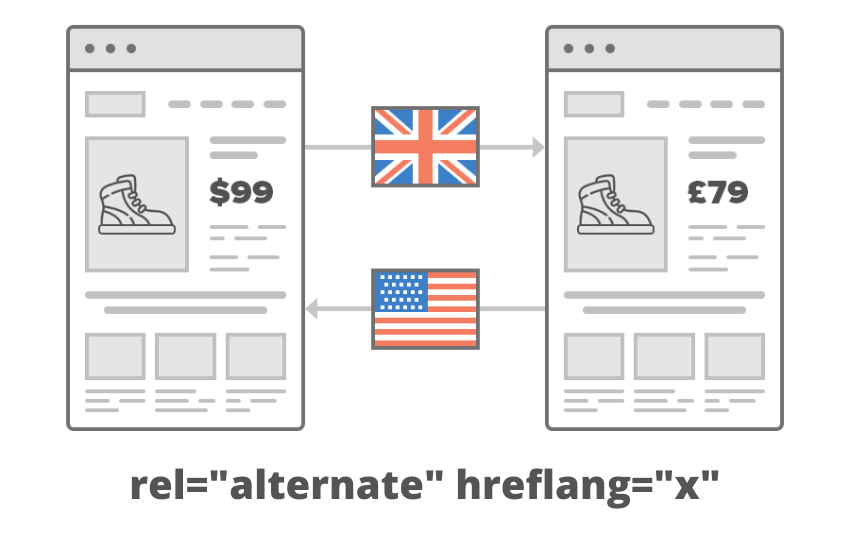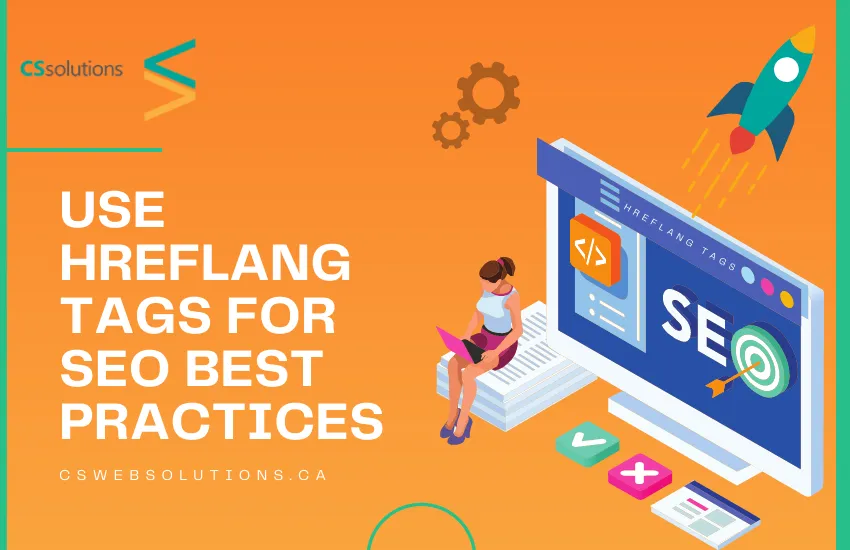Use Hreflang Tags for SEO Best Practices
When you have various forms of a page for different languages or regions, you should tell Google concerning these variations. Doing as such will assist Google to direct users toward the most proper version of your page by language or area. Therefore, having a multi language website is important to improve your SEO in different regions.
Note that even without making a move, Google may in any case find substitute language renditions of your page, yet it is normally best for you to expressly show your language-or locale explicit pages.
Some model situations where showing alternate pages is suggested:
- When you keep the principal content in a single language and translate just the layout, like the header and footer. Pages that include users created content, similar to forums, commonly do this.
- Assuming that your content has little regional variations with comparative content, in a solitary language. For instance, you may have English-language content designated to the US, UK, and Ireland.
- In case your site content is completely converted into various languages. For instance, you have both German and English renditions of each page.
- Localized adaptations of a page are possibly viewed as copies assuming that the fundamental content of the page remains untranslated.
That’s when the hreflang attribute comes into the picture to help your website deliver multiple variations of the website in different languages. It gives Google the right idea about the language of the page, its content, and redirects them to the right page. It improves the local SEO and showcases Google that you want to deliver separate content to people in different regions. The tag references the translated version and the page itself, leading to the best possible result to the search engine. Creating content that is specific to a local audience is one of the best ways to become globally relevant.
What is hreflang?
The rel=”alternate” hreflang=”x” trait is utilized to demonstrate what language your content is in and what geographical region your content is intended for.
Regularly, the rel=”alternate” hreflang=”x” quality is erroneously called the rel=”alternate” hreflang=”x” tag. For quickness, we’ll consider it the hreflang attribute for the sake of simplicity.
Assuming you have a site that is accessible in different languages, the hreflang attribute is a fundamental way to direct web crawlers so they can serve your content to the right crowd.

It’s valuable when you’ve made content that is explicit to a neighborhood audience. The hreflang attribute adds a sign to web indexes that a user questioning in language “x” will need this outcome rather than a page with comparable content in language “y”.
Here’s an hreflang example – let’s say, you make a Spanish-language variant of your English-language landing page, you would label it as “Español” by utilizing hreflang=”es” so searchers with an IP address that a web crawler has reason to accept is in a Spanish-talking nation are served that page in Spanish rather than the English rendition. This can diminish your bounce rate and increment your conversions by ensuring your interest group lands on the adaptation of your page that is created specifically for them.
Hreflang can likewise be utilized to show that you have content designated toward variations of a single language. Assuming that is the situation, you can focus on your pages much more explicitly by broadening the hreflang characteristic with explanations that demonstrate what area the content is targeted for. For example, Spain hreflang=”es-es” versus Mexico hreflang=”es-mx”. This is especially helpful to geo target clients to control for variations in shipping, transactions, culture, and more.
Hreflang is a sign, not an order. That implies that other SEO elements might abrogate the hreflang quality and cause an alternate variant of your page to rank higher. To give web search tools the most clear potential signs concerning which pages are for users in which language, ensure you’re utilizing other global SEO best practices.
Why hreflang attributes are important
Assuming you have a site that is accessible in different languages (multi language website), you need web crawlers to show your content to the right crowds. To assist search engines like Google with this, you should utilize hreflang values to show the language that content is in, and alternatively likewise which region it’s intended for.
Envision you’re serving users in two languages: English and Spanish. You’ve composed content in the two dialects, and presently you need to make it clear to web search tools that they should serve English content to your English-talking crowd and Spanish content to your Spanish-talking crowd. The method for doing that is by utilizing the hreflang attribute.
Another model use case would be when utilizing targeting based on specific geographical locations. Envision you’re focusing on English-talking users in the US and Canada and have content that is restricted for both these regions. Presently you can clarify that the two variations exist by joining the language definition with the locale that you’re focusing on. You would utilize the hreflang attribute to make web indexes list the two variations (en-us and en-ca for this situation).
Hire CS Web Solutions, a digital marketing company in Canada to optimize your multi-language, shopping store with SEO best practices.

